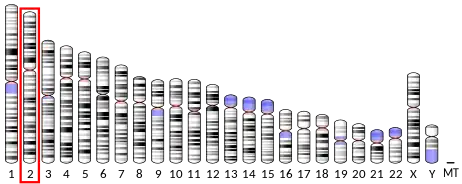| NABP1 | |||||||||||||||||||||||||||||||||||||||||||||||||||
|---|---|---|---|---|---|---|---|---|---|---|---|---|---|---|---|---|---|---|---|---|---|---|---|---|---|---|---|---|---|---|---|---|---|---|---|---|---|---|---|---|---|---|---|---|---|---|---|---|---|---|---|
| Identifiers | |||||||||||||||||||||||||||||||||||||||||||||||||||
| Aliases | NABP1, OBFC2A, SOSS-B2, SSB2, nucleic acid binding protein 1 | ||||||||||||||||||||||||||||||||||||||||||||||||||
| External IDs | OMIM: 612103 MGI: 1923258 HomoloGene: 57094 GeneCards: NABP1 | ||||||||||||||||||||||||||||||||||||||||||||||||||
| |||||||||||||||||||||||||||||||||||||||||||||||||||
| |||||||||||||||||||||||||||||||||||||||||||||||||||
| |||||||||||||||||||||||||||||||||||||||||||||||||||
| |||||||||||||||||||||||||||||||||||||||||||||||||||
| |||||||||||||||||||||||||||||||||||||||||||||||||||
| Wikidata | |||||||||||||||||||||||||||||||||||||||||||||||||||
| |||||||||||||||||||||||||||||||||||||||||||||||||||
Nucleic acid binding protein 1 is a protein that in humans is encoded by the NABP1 gene.[5]
Function
Single-stranded DNA (ssDNA)-binding proteins, such as OBFC2A, are ubiquitous and essential for a variety of DNA metabolic processes, including replication, recombination, and detection and repair of damage.[6]
References
- 1 2 3 GRCh38: Ensembl release 89: ENSG00000173559 - Ensembl, May 2017
- 1 2 3 GRCm38: Ensembl release 89: ENSMUSG00000026107 - Ensembl, May 2017
- ↑ "Human PubMed Reference:". National Center for Biotechnology Information, U.S. National Library of Medicine.
- ↑ "Mouse PubMed Reference:". National Center for Biotechnology Information, U.S. National Library of Medicine.
- ↑ "Entrez Gene: Nucleic acid binding protein 1".
- ↑ Richard DJ, Bolderson E, Cubeddu L, Wadsworth RI, Savage K, Sharma GG, Nicolette ML, Tsvetanov S, McIlwraith MJ, Pandita RK, Takeda S, Hay RT, Gautier J, West SC, Paull TT, Pandita TK, White MF, Khanna KK (May 2008). "Single-stranded DNA-binding protein hSSB1 is critical for genomic stability". Nature. 453 (7195): 677–81. Bibcode:2008Natur.453..677R. doi:10.1038/nature06883. PMID 18449195. S2CID 4322436.
Further reading
- Li Y, Bolderson E, Kumar R, Muniandy PA, Xue Y, Richard DJ, Seidman M, Pandita TK, Khanna KK, Wang W (August 2009). "HSSB1 and hSSB2 form similar multiprotein complexes that participate in DNA damage response". The Journal of Biological Chemistry. 284 (35): 23525–31. doi:10.1074/jbc.C109.039586. PMC 2749126. PMID 19605351.
- Huang J, Gong Z, Ghosal G, Chen J (August 2009). "SOSS complexes participate in the maintenance of genomic stability". Molecular Cell. 35 (3): 384–93. doi:10.1016/j.molcel.2009.06.011. PMC 2756616. PMID 19683501.
- Malovannaya A, Li Y, Bulynko Y, Jung SY, Wang Y, Lanz RB, O'Malley BW, Qin J (February 2010). "Streamlined analysis schema for high-throughput identification of endogenous protein complexes". Proceedings of the National Academy of Sciences of the United States of America. 107 (6): 2431–6. Bibcode:2010PNAS..107.2431M. doi:10.1073/pnas.0912599106. PMC 2823922. PMID 20133760.
This article incorporates text from the United States National Library of Medicine, which is in the public domain.
This article is issued from Wikipedia. The text is licensed under Creative Commons - Attribution - Sharealike. Additional terms may apply for the media files.



